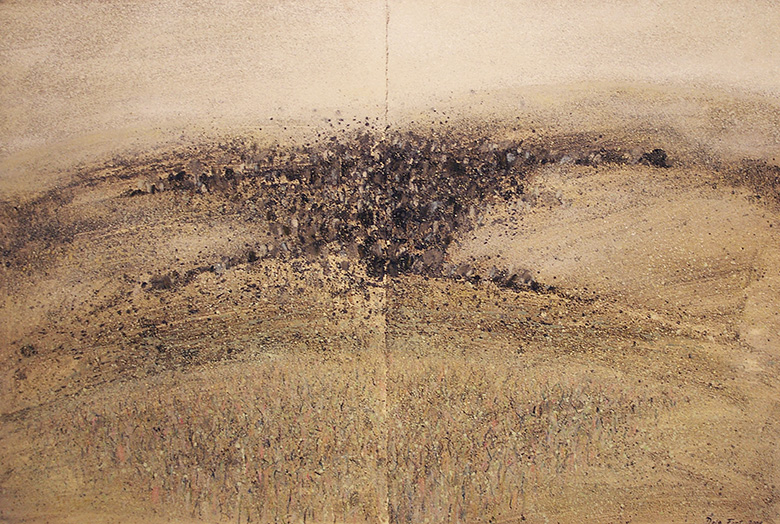
AIR8
20 Oct – 27 Nov 2010
Kim Anderson
Lean Im Chew
Amy Devereux
Dale Fort
Debbie Lloyd
John O’Loughlin
Rob Whitson
Anthony Woodward
Many institutions now have artist-in-residence programs but it would be difficult to find any two exactly the same. The point of similarity in the university model is that the residency should be something that is mutually beneficial. That is, the artist will benefit from having a focused period of time within a dedicated studio environment and the university students will benefit from the engagement with practicing artists whose work and experience contributes to their education and knowledge of what it takes to be a professional practicing artist. The Arts Academy at the University of Ballarat has added another element to the residency program by involving younger, local artists who are granted time in the studio environment to assist them in developing and maturing as artists.
This exhibition, AIR8, brings together the work of eight recent artists-in-residence at the Arts Academy. The exhibition is therefore both a celebration of the achievement of the artists involved, and a chance to reflect on the breadth and depth of the program.
Kim Anderson came to her residency at the Arts Academy having had residencies in Australia and overseas. A stay at the highly prestigious British School in Rome as an Australia Council International Studio resident allowed Kim to focus her attentions on her interest in the body, its surfaces and structures. Kim’s chosen medium, drawing, is ideally suited to her combining the best in traditional techniques of representation with her experimentation and innovations in terms of material and space.
Drawing is also essential to Lean-Im Chew’s work as she engages with issues of the spiritual and how meditative states of mind are evoked through the repetitions and rhythms of mark making. In her research Chew draws on both Eastern and Western ideas and traditions and also sees an affinity with the work of some Indigenous Australians.
Another of the artists concerned with the spiritual is John O’Loughlin whose ceramic artworks engage with the way in which organised religion, specifically the Catholic Church, deals with the translation of the spiritual into the material. Informed by his extensive travels and studies, O’Loughlin’s ceramics reference the reliquaries and church artefacts that connect the life of this world with that of faith in another world.
Like O’Loughlin, Robert Whitson has travelled far before returning to Ballarat to take up his residency. In this case Whitson travelled to the Himalayan region of Northern India where he investigated the forms of the landscape and how they are imbued with the spirit of place. This experience has impacted upon the way Whitson now views his own more local landscape and how its inhabitants leave their traces on that landscape.
Dale Fort similarly feels that landscapes have stories to tell. In his carefully considered response to place, Fort’s approach is to focus on the horizon and transform the colours, textures and forms of the landscape into the painterly layers and marks on the canvas. An apposite contrast in addressing how we as viewers process visual information is provided in the work of Debbie Lloyd. The meticulously folded and repeated forms of paper reveal Lloyd’s interest in visual perception and how, in the process of careful looking, forms, lines and patterns are revealed.
Striking a different note is the work of Amy Devereux. Drawing on her study of old illustrations, including the work of important early colonial botanical artists, Devereux produces lyrical evocations of flora and fauna. Watercolour can be a difficult medium to manage well, yet Devereux combines its traditional delicacy with the vibrancy and vitality of her contemporary practice. From an age old medium to a more recent invention Anthony Woodward uses digital technologies to bind together his drawings, photographs and found imagery. Referencing the comic book genre which is itself undergoing a revival thanks to digital technologies, Woodward veils and clouds his imagery, through a desire to reflect intense emotion and transformation.
In a very interesting and insightful comment on the experience of the residency itself, John O’Loughlin refers to the exchange with the students as an opportunity to “receive from them new ideas and enthusiasms.” This is a wonderful reminder of the mutually beneficial nature of the enterprise. The various approaches, experiences, ideas and areas of investigation of these eight artists together with what they bring (or in the case of some, bring back) to the University of Ballarat attests to the life and vitality of the artist-in-residence program at the Arts Academy.
Dr Jennifer Jones-O’Neill, 2010
Image: Dale Fort, Vale, 2010, mixed media on paper, 76 x 114cm